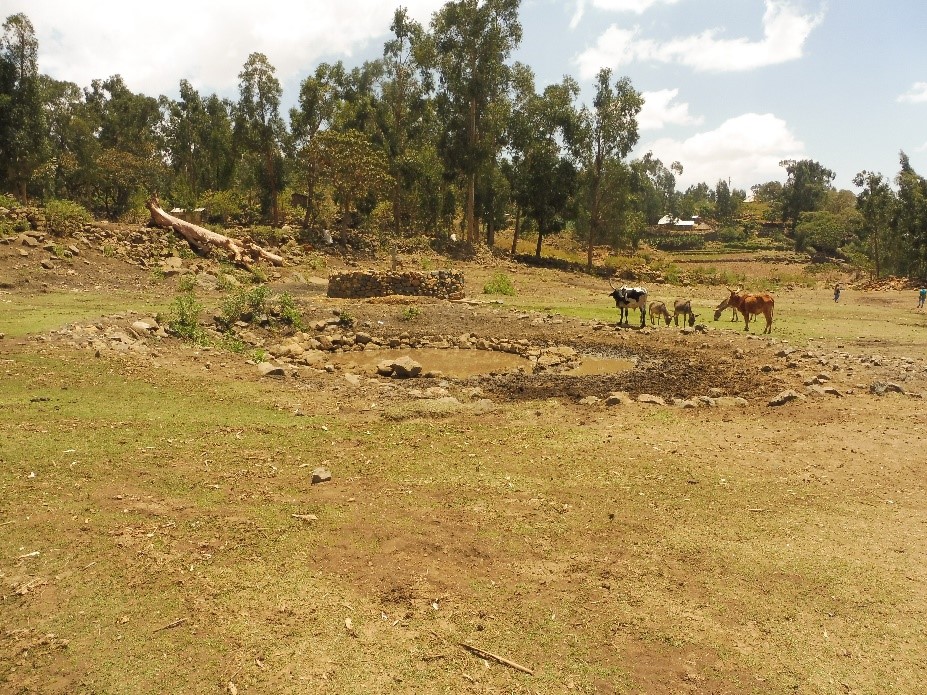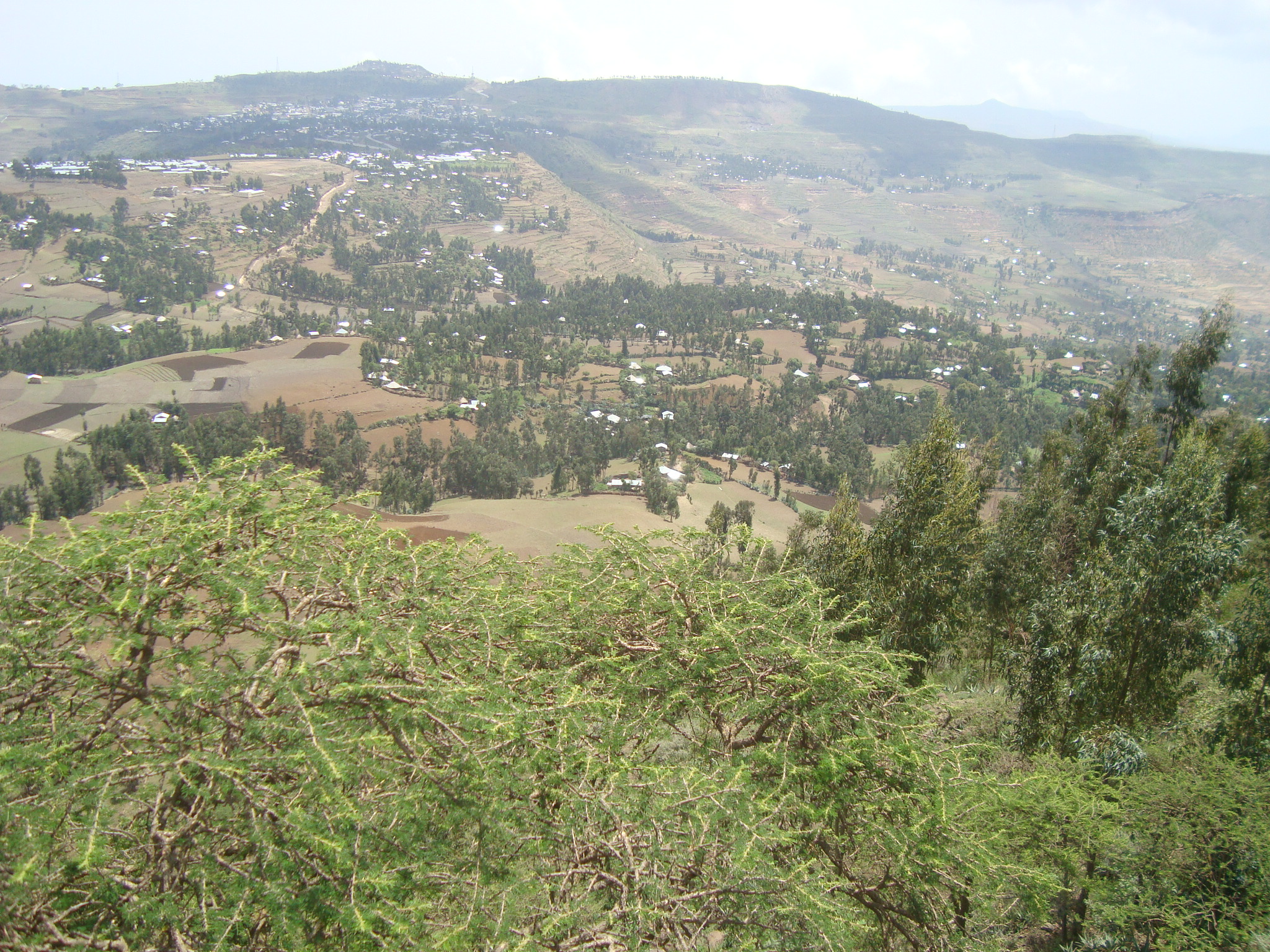|
Lim'at
Lim’at is a '' tabia'' in the Dogu'a Tembien district of the Tigray Region of Ethiopia. The ''tabia'' centre is in Maygwa village, located approximately 8 km to the southwest of the ''woreda'' town Hagere Selam. Geography The ''tabia'' stretches down from the Tsatsen plateau (2810 m a.s.l.), across the main road towards Zeleqwa (Upper Tanqwa) river (2270 m a.s.l.). Geology From the higher to the lower locations, the following geological formations are present: * Upper basalt * Interbedded lacustrine deposits * Lower basalt * Amba Aradam Formation * Antalo Limestone * Quaternary alluvium and freshwater tufa Geomorphology and soils The main geomorphic unit is the Hagere Selam Highlands. Corresponding soil types are: * Associated soil types ** shallow soils with high stone contents (Skeletic Cambisol, Leptic Cambisol, Skeletic Regosol) ** moderately deep dark stony clays with good natural fertility (Vertic Cambisol) ** deep, dark cracking clays, tempora ... [...More Info...] [...Related Items...] OR: [Wikipedia] [Google] [Baidu] |
Degua Tembien
Dogu'a Tembien (, "Upper Tembien", sometimes transliterated as Degua Tembien) is a woreda in Tigray Region, Ethiopia. It is named in part after the former province of Tembien. Nowadays, the mountainous district is part of the Southeastern Tigray Zone. The administrative centre of this woreda is Hagere Selam. History Dogu’a Tembien holds numerous prehistoric sites, which have been dated to the Middle Stone Age in Ayninbirkekin, or Pastoral Neolithic in Aregen and Menachek. Geography Topography and landscapes Major mountains :* Tsatsen, 2815 metres, a wide mesa between Hagere Selam and Inda Maryam Qorar () :* Ekli Imba, 2799 metres, summit of the Arebay massif in Arebay ''tabia'' or district () :* Imba Zuw’ala, 2710 metres, near Hagere Selam () :* Aregen, 2660 metres, in Aregen ''tabia'' () :* Dabba Selama, 2630 metres, in Haddinnet ''tabia'' () (not to be confused with the homonymous monastery) :* Imba Dogu’a, 2610 metres, in Mizane Birhan ''tabia'' () :* Imb ... [...More Info...] [...Related Items...] OR: [Wikipedia] [Google] [Baidu] |
Tanqwa
Tanqwa is a river of northern Ethiopia. Rising in the mountains of Dogu’a Tembien (2510 metres above sea level), it flows westward to Giba River which empties finally in the Tekezé River. Hydrography It is a confined river, locally meandering in its narrow alluvial plain, with a slope gradient of 25 metres per kilometre. With its tributaries, the river has cut a deep gorge. Tributaries Tributaries, upstream from Abiy Addi, include * Tsech'i River * May Qoqah * Arwadito * Adawro River Hydrology Hydrological characteristics The runoff footprint or annual total runoff volume is 41 million m³ at the bridge in Abiy Addi and 79 million m³ at the confluence with Giba River at Barashuwa. Peak discharges up to 543 m³ per second occur in the second part of the rainy season (month of August) when there are strong rains and the soils are saturated with water in many places. The percentage of total rainfall that directly leaves the catchment as storm runoff (also called ru ... [...More Info...] [...Related Items...] OR: [Wikipedia] [Google] [Baidu] |
Melfa (Dogu'a Tembien)
Dogu'a Tembien Melfa is a ''tabiya'' or municipality in the Dogu'a Tembien district of the Tigray Region of Ethiopia and ancient capital of Tembien. The ''tabia'' centre is Melfa village itself, located approximately 3 km to the west of the ''woreda'' town Hagere Selam. Geography The ''tabia'' stretches down from the ridge at 2700 m a.s.l. towards Zelekwa/Ruba Dirho River (2150 m a.s.l.). Geology From the higher to the lower locations, the following geological formations are present: * Upper basalt * Interbedded lacustrine deposits * Lower basalt * Amba Aradam Formation * Antalo Limestone Geomorphology and soils The main geomorphic unit is the Hagere Selam Highlands. Corresponding soil types are: * Associated soil types ** shallow soils with high stone contents (Skeletic Cambisol, Leptic Cambisol, Skeletic Regosol) ** moderately deep dark stony clays with good natural fertility (Vertic Cambisol) ** deep, dark cracking clays, temporarily waterlogged during th ... [...More Info...] [...Related Items...] OR: [Wikipedia] [Google] [Baidu] |
Hagere Selam (Degua Tembien)
Hagere Selam (meaning ''place of peace'') is a town in northern Ethiopia. Located on the Mekelle-Abiy Addi regional road, it is located at an elevation of 2650 metres above sea level. The town is the administrative center of the Dogu'a Tembien woreda. The weekly market is on Saturdays. Hagere Selam is located on the saddle point between two of the higher points in Tigray (Imba Zuw'ala and Tsatsen). The regional road from Mekelle to Abiy Addi climbs towards Hagere Selam, before going down to the Abergele lowlands. The area is categorized as highland or ''dega''. The local economy is dependent on trading, agriculture, with barley being the main crop grown in the area, and on milk production and apiculture. Demographics Based on figures from the census in 2007, Hagere Selam had a total population of 8130, of whom 3702 were men and 4428 were women. The 1994 census reported a total population of 3932. The functional agglomeration of Hagere Selam is larger than its administrative b ... [...More Info...] [...Related Items...] OR: [Wikipedia] [Google] [Baidu] |
Clay
Clay is a type of fine-grained natural soil material containing clay minerals (hydrous aluminium phyllosilicates, e.g. kaolin, Al2 Si2 O5( OH)4). Clays develop plasticity when wet, due to a molecular film of water surrounding the clay particles, but become hard, brittle and non–plastic upon drying or firing. Most pure clay minerals are white or light-coloured, but natural clays show a variety of colours from impurities, such as a reddish or brownish colour from small amounts of iron oxide. Clay is the oldest known ceramic material. Prehistoric humans discovered the useful properties of clay and used it for making pottery. Some of the earliest pottery shards have been dated to around 14,000 BC, and clay tablets were the first known writing medium. Clay is used in many modern industrial processes, such as paper making, cement production, and chemical filtering. Between one-half and two-thirds of the world's population live or work in buildings made with clay, often ... [...More Info...] [...Related Items...] OR: [Wikipedia] [Google] [Baidu] |
Degol Woyane
Degol Woyane is a ''tabia'' or municipality in the Dogu'a Tembien district of the Tigray Region of Ethiopia. It includes Dabba Selama, the oldest monastery of Ethiopia, and the most inaccessible in the world. The ''tabia'' centre is in Zala village, located approximately 10 km to the west of the ''woreda'' town Hagere Selam. Geography The ''tabia'' stretches down west of Melfa, along the westernmost ridge of Dogu'a Tembien. The highest peak is T'afa (2580 m a.s.l.) and the lowest place Addi Welo (1990 m a.s.l.). Geology From the higher to the lower locations, the following geological formations are present: * Lower basalt * Amba Aradam Formation * Adigrat Sandstone Springs As there are no permanent rivers, the presence of springs is of utmost importance for the local people. The following are the springs in the tabia: * May Dara in Zala * Addi Welo Livelihood The population lives essentially from crop farming, supplemented with off-season work in nearby towns. T ... [...More Info...] [...Related Items...] OR: [Wikipedia] [Google] [Baidu] |
Aregen
Aregen is a ''tabia'' or municipality in the Dogu'a Tembien district of the Tigray Region of Ethiopia. The ''tabia'' centre is in Addi Gotet village, located approximately to the west-southwest of the ''woreda'' town Hagere Selam. Geography The ''tabia'' occupies an elongated ridge between the gorges of Upper Tanqwa and Tsech'i Rivers. The highest peak is near Aregen village ( a.s.l.) and the lowest place at the confluence of the two rivers ( a.s.l.). Geology From the higher to the lower locations, the following geological formations are present: * Lower basalt * Amba Aradam Formation * Antalo Limestone * Adigrat Sandstone Geomorphology and soils The main geomorphic units, with corresponding soil types are: * Hagere Selam Highlands, along the central basalt and sandstone ridge ** Associated soil types *** shallow soils with high stone contents (Skeletic Cambisol, Leptic Cambisol, Skeletic Regosol) *** moderately deep dark stony clays with good natural fertility (Ver ... [...More Info...] [...Related Items...] OR: [Wikipedia] [Google] [Baidu] |
Drainage System (geomorphology)
In geomorphology, drainage systems, also known as river systems, are the patterns formed by the streams, rivers, and lakes in a particular drainage basin. They are governed by the topography of land, whether a particular region is dominated by hard or soft rocks, and the gradient of the land. Geomorphologists and hydrologists often view streams as part of drainage basins (and sub-basins). This is the topographic region from which a stream receives runoff, throughflow, and its saturated equivalent, groundwater flow. The number, size, and shape of the drainage basins varies and the larger and more detailed the topographic map, the more information is available. Drainage patterns Per the lie of channels, drainage systems can fall into one of several categories, known as drainage patterns. These depend on the topography and geology of the land. All forms of transitions can occur between parallel, dendritic, and trellis patterns. Accordant versus discordant drainage patterns A drai ... [...More Info...] [...Related Items...] OR: [Wikipedia] [Google] [Baidu] |
Nile
The Nile, , Bohairic , lg, Kiira , Nobiin language, Nobiin: Áman Dawū is a major north-flowing river in northeastern Africa. It flows into the Mediterranean Sea. The Nile is the longest river in Africa and has historically been considered the List of rivers by length, longest river in the world, though this has been contested by research suggesting that the Amazon River is slightly longer.Amazon Longer Than Nile River, Scientists Say Of the world's major rivers, the Nile is one of the smallest, as measured by annual flow in cubic metres of water. About long, its drainage basin covers eleven countries: the Democratic Republic of the Congo, Tanzania, Burundi, Rwanda, Uganda, Kenya, Ethiopia, Erit ... [...More Info...] [...Related Items...] OR: [Wikipedia] [Google] [Baidu] |
Tekezé River
The Tekezé or Täkkäze River ( amh, ተከዜ, ti, ተከዘ; originally meaning "river" in Ge’ez, ), also spelled Takkaze, is a major river of Ethiopia. For part of its course it forms a section of the westernmost border of Ethiopia and Eritrea. The river is also known as the Setit () in Eritrea, western Ethiopia, and eastern Sudan. According to materials published by the Ethiopian Central Statistical Agency, the Tekezé River is long. The canyon which it has created is the deepest in Africa and one of the deepest in the world, at some points having a depth of over 2000 meters (6,562 feet). Course The Tekezé River rises in the central Ethiopian Highlands near Mount Qachen within Lasta, from where it flows west, north, then west again, forming the westernmost border of Ethiopia and Eritrea from the confluence of the Tomsa with the Tekezé at to the tripoint between the two countries and Sudan at . After entering northeastern Sudan at the tripoint it joins the Atbarah ... [...More Info...] [...Related Items...] OR: [Wikipedia] [Google] [Baidu] |
Luvisol
Luvisols are a group of soils, comprising one of the 32 Reference Soil Groups in the international system of soil classification, the World Reference Base for Soil Resources The World Reference Base for Soil Resources (WRB) is an international soil classification system for naming soils and creating legends for soil maps. The currently valid version is the fourth edition 2022. It is edited by a working group of the Inte ... (WRB). They are widespread, especially in temperate climates, and are generally fertile. Luvisols are widely used for agriculture. Distribution Luvisols cover 500–600 million ha of land area, mainly in the temperate zones. They form on a wide variety of mineral parent materials. In Mediterranean regions, the formation of hematite can produce red-coloured Chromic Luvisols. Description and formation The main characteristic of Luvisols is an argic horizon, a subsurface zone with higher clay content than the material above it. This typically arises as clay is was ... [...More Info...] [...Related Items...] OR: [Wikipedia] [Google] [Baidu] |








